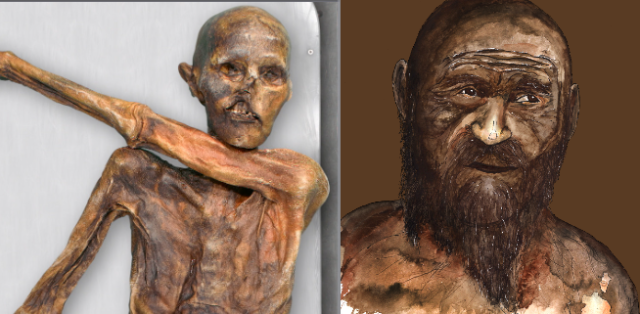High in the icy silence of the Ötztal Alps, a man lay frozen in time — hidden under snow and glacier for more than 5,000 years. When hikers discovered his body in 1991, they had no idea they had stumbled upon one of the greatest archaeological finds in modern history.
He would come to be known as Ötzi, the Iceman — a Copper Age traveler who died around 3400–3100 BCE. But he didn’t die quietly. An arrow pierced his shoulder, shattering bone and blood vessels. He suffered a head injury. And his hand bore the mark of a fight, just days earlier.
Beside him were his tools: a copper axe, flint knife, and a long wooden stick — later confirmed to be a bow. His quiver still held arrows, some finished, some half-made. He wore a coat, leggings, a belt, and a loincloth, all crafted from animal hide, and a bearskin cap to shield him from the cold. Even his shoes were stuffed with grass for warmth. Near him lay a broken frame — likely the remains of a backpack.
Ötzi also carried birch-bark containers, one of which held charcoal and maple leaves — clues to fire-making or medicine. His stomach, miraculously preserved, still held his final meal: meat, fruit, grains, and plants — a diet as practical as it was telling.
But perhaps the most haunting discovery? 61 tattoos, made by cutting the skin and rubbing in charcoal — likely for pain relief, marking the earliest known form of therapeutic tattooing.
Today, Ötzi rests in the South Tyrol Museum of Archaeology in Italy, still dressed in the clothes he died in. Through science and time, he whispers from a world long gone — reminding us how much we can learn from those who walked before us.






















